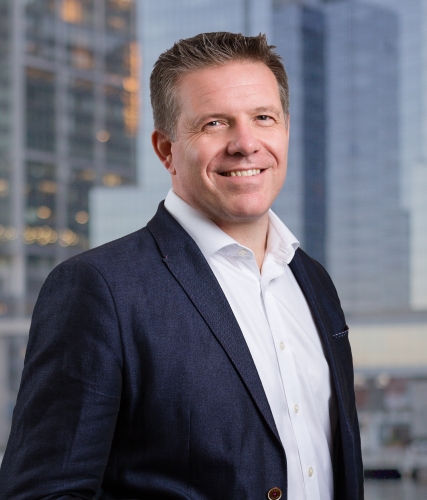
Asset Management’s Ever-Evolving Middle Office

The middle office (MO) only exists because the front-office (FO) portfolio managers and traders can’t communicate with the back-office (BO) accountants and bookkeepers. Of course, this statement is apocryphal but having dealt with a wide variety of portfolio managers, traders and investment accountants, there is more than a grain of truth in this. With the competitive pressures across the industry growing each year, it’s worth digging into how middle-office capabilities are evolving.
Defining terms, the front office exists to run the portfolio decisions, trading, risk and compliance, and works closely with the sales and distribution functions in client engagement. The back office is typically responsible for the investment accounting, reporting, and non-client-facing administration. The middle office, therefore, has overlaps with both and safeguards the accuracy, timeliness, consistency, and completeness of all those activities. On one hand, the FO wants everything real-time, and the BO wants everything perfect for the monthly, quarterly, and annual reports. Maybe the MO is actually the rose between two thorns?
Trends shaping middle-office capabilities
Asset managers are having to respond more rapidly to the shifting demands of their clients. According to BNY, nearly 90% of respondents already have existing exposure to “customised client products” and, over the next 1–2 years, almost half of all managers will increase that customisation still further. Aligned with this trend, allocations in alternatives are all planned to increase, with private equity (almost 70% of managers) and real estate (over 60%) being the leading beneficiaries.1 So, it’s no surprise that many asset managers have decided to focus on their FO core business strengths and outsource their MO to firms more able to continually provide competitive advantage in those tech, data, and digital capabilities.
Ignoring the in-house vs outsource debate for now, where are MO capabilities improving and evolving? The obvious area is in providing lifecycle support across a wider range of assets, from all public to all private assets, real assets, derivatives, and including even bitcoin and digital assets. Asset management clients want their investment returns and good old equities aren’t doing the trick anymore!
Is tokenisation a game changer?
Tokenisation crafts digital assets and is a hot topic amongst asset managers, with UK Finance estimating that “digital assets could represent as much as 10% of the global market by 2030, equivalent to a value of between $4-$5 trillion”.2 For instance:
- The UK’s Asset Management Taskforce has been working successfully to foster the foundational infrastructure for fund tokenisation and many new fintech firms have emerged to offer solutions in the MO space too.3
- Broadridge launched its Distributed Ledger Repo solution in 2021 and reports achieving a trillion dollars a month in volumes.4
Innovation like this more easily takes root in the smaller players and niche markets but the larger MO service providers are deliberately more risk averse and have tougher barriers to overcome due to their global footprint.
For wider adoption, there would need to be a global taxonomy, consistent legal and regulatory framework, and aligned supervisory structures too. The Monetary Authority of Singapore (MAS) has been running Project Guardian, a collaborative initiative exploring tokenisation that has involved J.P. Morgan, DBS, HSBC, UOB, and Standard Chartered, amongst others, but even they concede that, “policymakers and operators will need to review the standards and practices for risk management and operational execution on an ongoing basis.”5 Neither the UK nor the US are in lockstep with the MAS just yet—more work on standards is needed.
Alongside this, the technology is new and poorly understood. Tokenisation leans on distributed ledger technology (DLT) and whilst it may work in isolation, global firms will need to knit together legacy technology with DLT. Interoperability is critical. And tech security that spans old and new tech is notoriously difficult but needs to be offered as part of a future-proof MO.
How is AI integration transforming middle-office operations?
The other big innovation that the MO needs to accommodate is artificial intelligence. Everyone is talking about AI and as a leading AI researcher and ethicist, Eliezer Yudkowsky, said: “by far, the greatest danger of artificial intelligence is that people conclude too early that they understand it.”6 Nonetheless, the Boston Consulting Group’s recent research indicates that AI-fuelled productivity gains exist across the whole value chain, led by marketing (30-40% gains), IT (15-30%), and operations (20-25%).7
Focusing on those operational improvements, AI impacts break down into three key areas:
-
Enhancing MO Operational Efficiency
AI is very good at writing the first draft of your child’s homework but also in proactively knitting together disparate data sets to help provide that consistent, accurate, and reconciled view that is vital to a MO. AI is being used to create that first draft of your MO homework. From rapidly ingesting (and enriching) non-homogeneous ISDA contracts, through the automation of allocation/confirmation emails and spreadsheets, to real-time AI-fuelled APIs that reduce that interoperability issue, all are being tackled step by step, ensuring you get that top grade from your MO teacher.
-
Managing Risk
J.P. Morgan’s CEO, Jamie Dimon, has said that “[…]AI has helped us significantly decrease risk in our retail business (by reducing fraud and illicit activity).”8
AI fosters tools to assist in compliance and risk functions, automate data analysis, and even anticipate risky events. Compliance systems have typically operated on a batch basis, although now supplemented with real-time AI, they can continuously evaluate your relative risks and increasingly predict future issues. For example, back in 2022, Fidelity launched an AI-powered RegTech called Saifr that streamlines “the compliance review process all in one platform to support efficient collaboration between marketing, legal, compliance, and external consultants.”9 Prevention, as they often say, is better than cure.
-
Data Management, as a Service?
Probably the most significantly impacted area is in the world of data, and significantly automated data management. The MO nirvana is an enterprise-wide, clean, standardised dashboard that handles all electronic workflow across all asset classes and counterparties. The leading asset management firms are getting ever closer to this, and the asset service providers are assisting with more complete ‘data management as a service’ offerings delivered on the cloud. New data technology has allowed operating models to be more flexible, more plug and play, so the viability to run hybrid in-house and outsourced functions together has soared.
In conclusion, the MO is a part of the traditional asset manager that is undergoing enormous positive change. It’s hard to see an area of the MO that isn’t materially affected. However, with opportunity comes threat. The better your MO, the less you’ll notice it. The smoother the communication, the less you’ll need to listen. Bluntly, the MO is a human-powered API between FO and BO and could—and should—eventually become an AI-powered interface. As Henry Ford II said, “obsolescence is the very hallmark of progress” and maybe that’s the very best future for our squeezed middle office.
References
1 The Future of Asset Management: A Trends Report (2024) BNY.
2 Unlocking the Power of Securities Tokenisation (2023) UK Finance.
3 Technology Working Group publishes report on fund tokenisation (2023) UK HM Treasury.
4 DLR Transacts $1 Trillion a Month (2021) Broadridge.
5 Project Guardian: Enabling Open and Interoperable Networks (2023) Monetary Authority of Singapore.
6 Artificial Intelligence as a Positive and Negative Factor in Global Risk, Yudkowsky, E. (2008) Machine Intelligence Research Institute, Oxford University Press.
7 AI and the Next Wave of Transformation (2024) Boston Consulting Group.
8 Creating Possibility Annual Report (2023) J.P. Morgan Chase.
9 Fidelity Investments® Launches Innovative New Regulatory Technology (RegTech) Business to Help Financial Institutions Create Compliant Public Communications (2022) Fidelity Investments.
Tags:

Chris Mills is a Managing Director at Citisoft with over 25 years of sector experience. Prior to joining, Chris successfully led business development for Finastra’s global managed services business and KPMG’s UK investment management practice. He has also driven the global growth for leading system vendors including BlackRock Solutions and Charles River Development. Chris has deep expertise in data infrastructure, fintech integration, alternatives, and digital assets.

Chris leads business development efforts for Citisoft' EMEA. He has decades of experience serving financial services firms in a variety of business development and leadership roles. Chris has deep expertise in data infrastructure, fintech integration, alternatives, and digital assets. Before joining Citisoft, he successfully led business development for Finastra’s global managed services business and KPMG’s UK investment management practice. He has also driven the global growth for leading system vendors including BlackRock Solutions and Charles River Development.




Comments